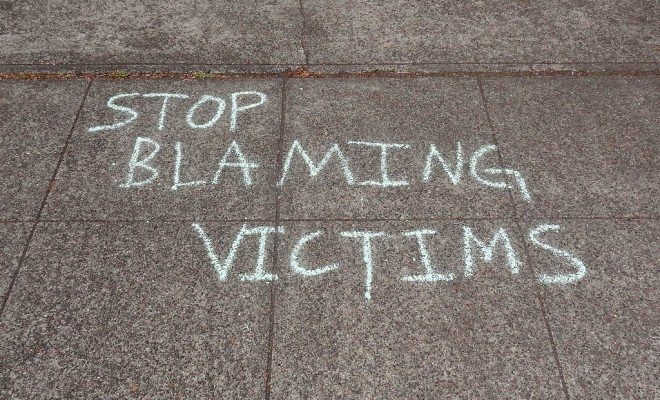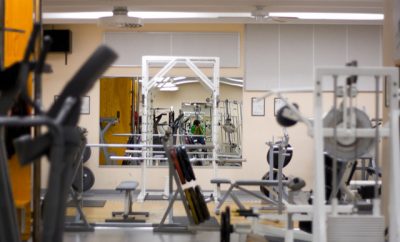 Image courtesy of [Wolfram Burner via Flickr]
Image courtesy of [Wolfram Burner via Flickr]
Crime
Sexual Assault: Still a Problem for Colleges
One of the most important problems facing college students today is sexual assault, and a recent poll by the Washington Post-Kaiser Family Foundation further solidifies this fact. The poll found that one in five women are victims of sexual assault in college. The poll also indicates that very few cases of sexual assault are actually reported to police or campus authorities.
Conducted between January and March, the Post/Kaiser poll surveyed 1,053 college students who live on or near their school’s campus.
According to the Rape Assault Incest National Network (RAINN), 68 percent of sexual assault victims nationwide do not report the crime to the police, and the rate on college campuses is even strikingly lower. According to the Post/Kaiser poll, 72 percent of the respondents who experienced unwanted sexual contact or sexual assault said that they told someone about it. Of that, only 11 percent told the police or campus authorities.
How can a crime as traumatic and prevalent as sexual assault be reported at such a low rate?
A wide range of factors may prevent sexual assault survivors from reporting or even openly discussing the crime that has been perpetrated against them. Victims often remain silent because they fear that the police, school administrators, or their peers won’t believe them. A 2007 study by The U.S. Department of Justice found that 42 percent of forcible sexual assault victims who did not report the attack said it was because they “did not want anyone to know.”
The fact that most victims know their assailant as well as the fear of being unfairly blamed and victim shamed, particularly when alcohol is involved, can make reporting very difficult. When a victim knows the person who assaulted them it can become very difficult to talk about what happened to friends or authority figures. According to the Post/Kaiser poll, 70 percent of victims said that they knew the person in some way, and nearly 50 percent said they knew the person well or very well. While those who are sexually assaulted are never to blame for what happened to them, victim blaming remains a reality for many on college campuses. This is particularly prevalent when alcohol is involved, which according to the Post/Kaiser poll happens in more than 60 percent of cases.
Finally, victims of sexual assault may not report the crime because it is simply unlikely that the perpetrator will actually receive punishment. According to RAINN, of the 32 percent of sexual assaults reported to the police nationally, only seven percent lead to an arrest, and an even lower two percent were convicted or spend a day in prison. Theories have posited that the reporting rate is so low because many victims believe that a two percent conviction rate is not sufficient enough to go through filing a police report, an invasive rape kit, and possibly testifying in a trial. Federal data also shows that punishment remains an issue on college campuses, as administrators often warn, suspend, or order counseling for offenders rather than expel them.
While the Post/Kaiser poll provides important insight into the issue of sexual assault on college campuses, and the one in five statistic is certainly striking, a lot remains unknown. The factors behind underreporting to the police may also affect the results of anonymous surveys. While these surveys provide a much better understanding of sexual assault compared to the number of cases reported to the police, polls still face their own challenges. Because the issue of sexual assault likely varies between campuses, national surveys cannot help us understand all of the problems that individual institutions face.
As sexual assault becomes an important national issue, colleges around the country are starting to take important steps to prevent assaults on campus. New programs and policies are starting to encourage victims to come forward, raise awareness, and provide new resources to students. Programs like the Campus Grant Program and the Bystander Intervention Programs are just a few examples that can help reduce sexual assault cases. Last year, a dozen House members called on U.S. News and World Report to include efforts to prevent sexual assaults in its annual college rankings.
The White House launched the “It’s On Us” campaign to increase awareness and empower men and women to actively prevent sexual assault. The Obama Administration is also encouraging the Department of Education (DOE) to proactively deal with the issue using its Title IX authority. These efforts have led the DOE’s Office for Civil Rights to investigate more than 100 colleges and universities for potentially mishandling sexual violence cases.
It’s clear that sexual assault cases on college campuses are a huge problem that must continue to be addressed nationally. As a society, we must take action to deter these crimes instead of blaming victims. Colleges must create an environment where victims are encouraged to come forward and we can all work together to make sure these alarmingly high rates become a thing of the past.








Comments